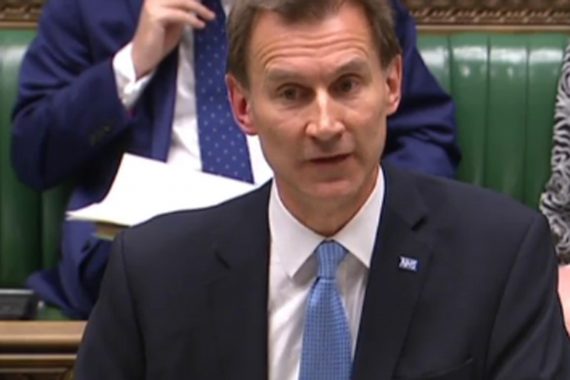DH will fund just a third of promised extra medical school places next year

Only 500 of the extra medical school places pledged by the Government to ensure ‘self-sufficiency’ in homegrown doctors will come on stream in 2018, it has been revealed.
A health minister has said just a third of the 1,500 promised places will be funded next year, while the DH consults on ‘how to make available’ the remaining 1,000 places ‘from 2019/20’.
Health secretary Jeremy Hunt first announced the plans at the Conservative Party conference in October last year, when he said boosting places by ‘a quarter’ would be ‘the biggest annual increase in medical student training’ in NHS history when it happened ‘from 2018’.
But his claim has been thrown into doubt, as Tony Blair oversaw a 60% increase in medical school places during his term as Prime Minister, from 3,749 in 1997 to 6,030 in 2003.
Mr Hunt said that raising the cap on the number of places from 6,000 to 7,500 was necessary in order to ensure that the ‘NHS will be self-sufficient in doctors’ by the end of the next Parliament when these new doctors would have ‘completed their undergraduate medical training’.
And at the time, the DH said students would ‘be able to apply for the extra places from next year in order to take them up from the academic year 2018/19’.
But responding to a written question from Ian Lavery, Labour’s shadow minister for the Cabinet Office, health minister Philip Dunne said yesterday: ‘In September 2018, the Government will fund 500 additional student places through medical schools in England each year.
‘The Government is currently consulting on how to make available the further 1,000 places from 2019/20 to medical schools in England.’
Asked about the discrepancy, a DH spokesperson told Pulse: ‘You’re right in that 500 additional places will be made available to students in September 2018’.
But they added that postponing the funding of the other placements was ‘in order to maximise the benefits from the increase in medical student numbers’ and it was consulting on how to do this.
The consultation, launched last month, proposed medical schools could boost their funding based on how well they promote general practice. It called on respondents to suggest criteria for allocating the remaining 1,000 places – which will be awarded to medical schools ‘via a competitive bidding process’.
During the Coalition Government Parliament from 2010 onwards, the number of places was decreased by 2% in order to prevent an oversupply of consultants.
RCGP chair Professor Helen Stokes-Lampard said: ‘Any increase in training numbers must be seen as a step in the right direction, but if these figures are correct, we still have a major challenge on our hands to increase the number of medical students coming into general practice.’
The DH did not respond when Pulse asked whether funding 500 more places did amount to the ‘the biggest annual increase’ in NHS history.
However, following the publication of the article, the DH has said that there will be a 9% annual increase of homegrown students in 2018, and a subsequent 16% increase in 2019 when the remaining 1,000 places come on stream.
The DH added that it was ‘unfair’ to compare the increase with the six-year period in which the former Labour Government increased places, and claimed that the largest annual additon of places during that time was one of 14%.
Note: This article was updated at 12.02 on 20 April to include additional information supplied by the DH.
Pulse October survey
Take our July 2025 survey to potentially win £1.000 worth of tokens










